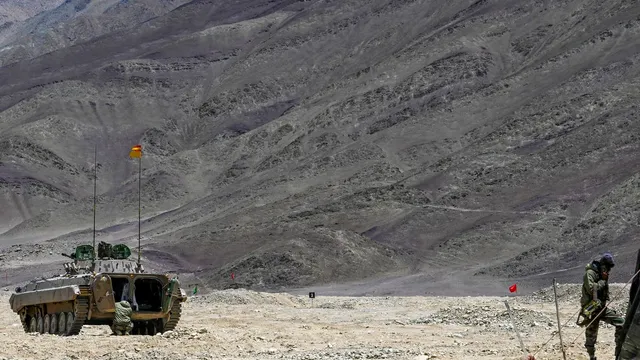
India’s Modi marks the opening of a strategic tunnel in disputed Kashmir
2025-01-13 12:23- Prime Minister Narendra Modi opened the Z-Morh tunnel on January 11, 2025, during a visit to Kashmir.
- The construction of the tunnel aims to provide all-year accessibility to Sonamarg and enhance military capabilities in Ladakh.
- The project is expected to boost tourism and local employment in the region, marking a significant development amidst ongoing tensions.
Express your sentiment!
Insights
On January 11, 2025, Prime Minister Narendra Modi formally opened the Z-Morh tunnel in Sonamarg, a town within the Ganderbal district of Jammu and Kashmir, India. This tunnel has been constructed to provide year-round accessibility to Sonamarg, a place that previously faced isolation due to heavy snowfall. The Z-Morh tunnel, measuring 6.5 kilometers in length, represents only part of a larger infrastructure project worth $932 million, which includes the construction of additional highways, bridges, and a second tunnel to improve connectivity between Kashmir and the cold desert region of Ladakh. Modi's visit to the region was marked by tight security measures, including police checkpoints and drone surveillance, due to the region's history of insurgency and violence associated with disputes over territorial control. The local population has often suffered from limited accessibility during harsh winter months; this new tunnel aims to significantly alleviate that issue. Additionally, it is projected to foster tourism by transforming Sonamarg into a year-round destination, potentially increasing local employment and economic growth. The Z-Morh tunnel's construction was started in 2018, and the project employs advanced engineering techniques to ensure swift transit through difficult mountainous terrain that had been previously obstructed by avalanches. The Indian government has positioned this infrastructure as essential not only for civilian convenience but also for enhancing military logistical capabilities in the sensitive Ladakh region, where tensions with Pakistan and China have persisted. Nevertheless, the project has not been without challenges, including violent incidents, as evidenced by at least seven workers being shot in October 2022 while working on the site, attributed by police to local insurgent activities. The Z-Morh tunnel is part of a broader narrative surrounding Kashmir's status, following the 2019 revocation of its special autonomous status by the Indian government. This decision has further complicated socio-political dynamics in the region, where significant populations continue to support differing visions of Kashmir's governance and affiliation. The completion of the Z-Morh tunnel could serve as a testament to the Indian government's commitment to infrastructure development in the region despite ongoing tensions.
Contexts
Infrastructure development in border regions is crucial for several reasons, with its benefits extending beyond mere physical connectivity. Primarily, enhanced infrastructure such as roads, bridges, and communication systems fosters economic growth by facilitating trade and movement of goods and services across borders. By significantly reducing transportation costs and time, businesses in these regions can access larger markets, enhancing their competitiveness and promoting local industries. Furthermore, improved infrastructure attracts investments from both domestic and foreign entities, creating job opportunities and boosting the overall economy of the area. Local economies stand to benefit tremendously, as increased commercial activities lead to a multiplier effect, stimulating further economic development and community growth. In addition to economic benefits, infrastructure development in border regions plays a pivotal role in improving social cohesion and cultural exchanges. Increased connectivity encourages people-to-people interaction, allowing residents from neighboring regions to engage in cultural exchanges and share experiences. This interaction fosters goodwill and understanding among different communities, thus promoting peace and stability in border areas. Additionally, better infrastructure ensures access to essential services such as healthcare, education, and social welfare. Improved transportation links facilitate better access to medical facilities and educational institutions, contributing to enhanced quality of life for residents. Moreover, enhanced infrastructure can have significant implications for national security and disaster management. Secure and well-maintained transportation routes can enhance border security by facilitating efficient movement of law enforcement and emergency services. In times of crisis, such as natural disasters or humanitarian emergencies, well-developed infrastructure enables swift and effective responses. Emergency services can reach affected areas quickly, and evacuation routes are established, thereby saving lives and minimizing damage. A secure and resilient infrastructure is vital to ensure that border regions can withstand and recover from various challenges. Lastly, infrastructure development often includes the introduction of advanced technologies, which can lead to more sustainable practices. Innovations such as renewable energy sources, smart transportation systems, and eco-friendly building practices contribute to environmental sustainability. Improving infrastructure while considering environmental impacts ensures that development is not only economically sound but also ecologically responsible. Overall, the benefits of infrastructure development in border regions are multifaceted, leading to economic prosperity, social integration, enhanced security, and sustainable practices.